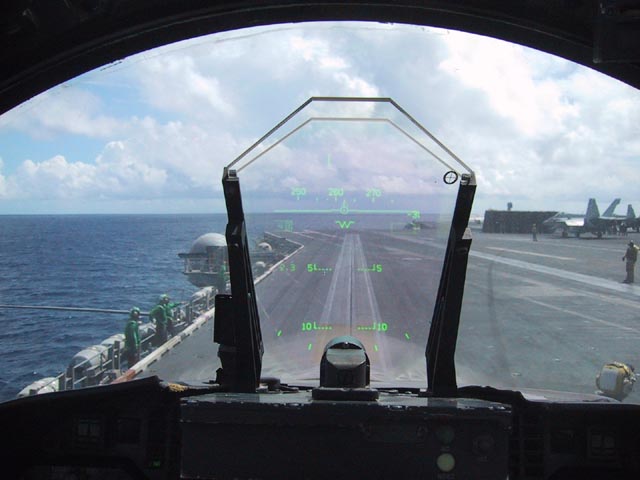
Head-up display
A head-up display, or heads-up display,[1] also known as a HUD (/hʌd/) or head-up guidance system (HGS), is any transparent display that presents data without requiring users to look away from their usual viewpoints. The origin of the name stems from a pilot being able to view information with the head positioned "up" and looking forward, instead of angled down looking at lower instruments. A HUD also has the advantage that the pilot's eyes do not need to refocus to view the outside after looking at the optically nearer instruments.
This article is about the military and vehicle technology. For its use in gaming, see HUD (video gaming).
Although they were initially developed for military aviation, HUDs are now used in commercial aircraft, automobiles, and other (mostly professional) applications.
Head-up displays were a precursor technology to augmented reality (AR), incorporating a subset of the features needed for the full AR experience, but lacking the necessary registration and tracking between the virtual content and the user's real-world environment.[2]
There are several factors that interplay in the design of a HUD:
Further development and experimental uses[edit]
HUDs have been proposed or are being experimentally developed for a number of other applications. In military settings, a HUD can be used to overlay tactical information such as the output of a laser rangefinder or squadmate locations to infantrymen. A prototype HUD has also been developed that displays information on the inside of a swimmer's goggles or of a scuba diver's mask.[36] HUD systems that project information directly onto the wearer's retina with a low-powered laser (virtual retinal display) are also being tested.[37][38]
Some head-up displays can perform real-time language translation.[39]